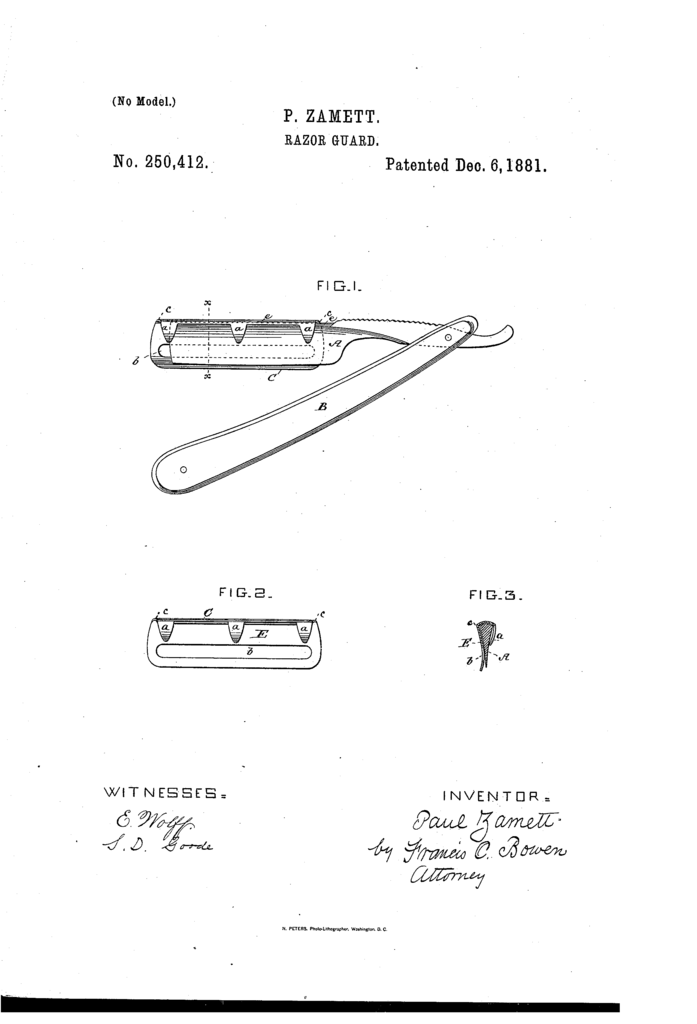King Gillette didn’t invent the modern double edge safety razor in a vacuum. The idea of placing a guard near the razor sharp edge goes back to Perret’s 1762 razor guard. And even if Frederick and Otto F. Kampfe patented the first recognisable modern razor in 1880, people did not stop inventing improvements to the straight razor. Enter left; Paul Zammet and his 1881 patent!
Paul Zammet’s improved razor guard isn’t conceptually different from Perret’s idea. A guard is mounted on the blade, in such a way that it will be less likelihood of ending up with a cut throat. Perret likely used wood, Zammet envisioned a stamped metal1 device. As far as can be made out from the patent and drawing, it simply clipped over the back of the blade, and protruded out slightly in front of it. The edge of the guard formed a safety bar, and a cut out let lather and cut whiskers pass through.

Like many such guards, the device would limit the shaver to use only one side of the blade. Paul Zammet recognises this in the patent text, and points out the guard could “easily” be slid of the blade and reversed. How easily this could be done with a wet and lathery blade is left as an exercise to the reader.
The full patent can be read at Google Patents. If you enjoy this sort of thing, I got a page full of patents and other oddities related to shaving.
1) Although he did state in the patent that “metal, rubber, wood, or any other suitable material” could be used. Only metal makes sense in the face of the drawing though.

Pingback: Thomas Claude Durham and the safety device for straight razors and an early shavette - Wegian WetshavingWegian Wetshaving